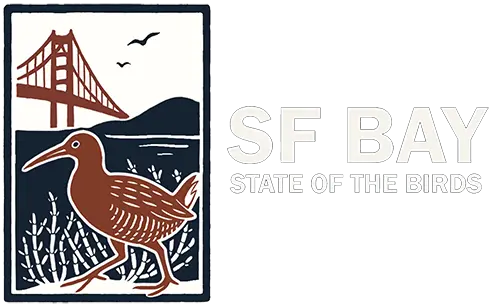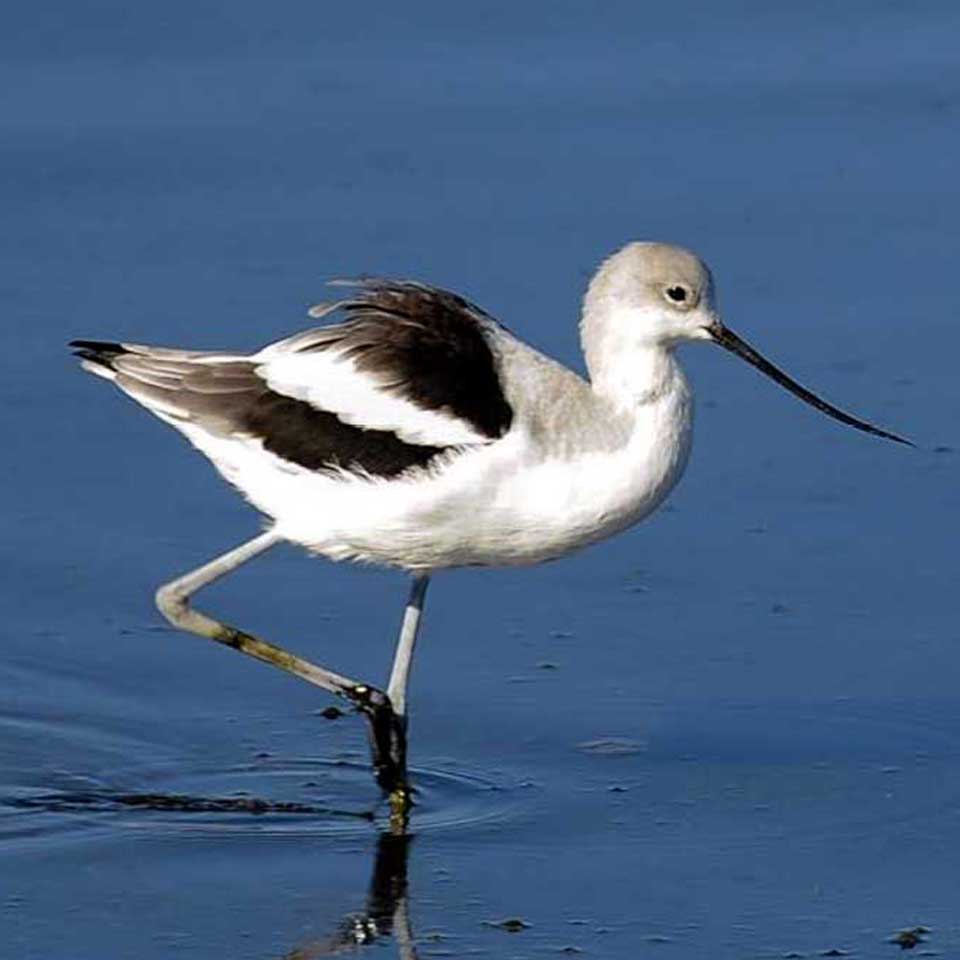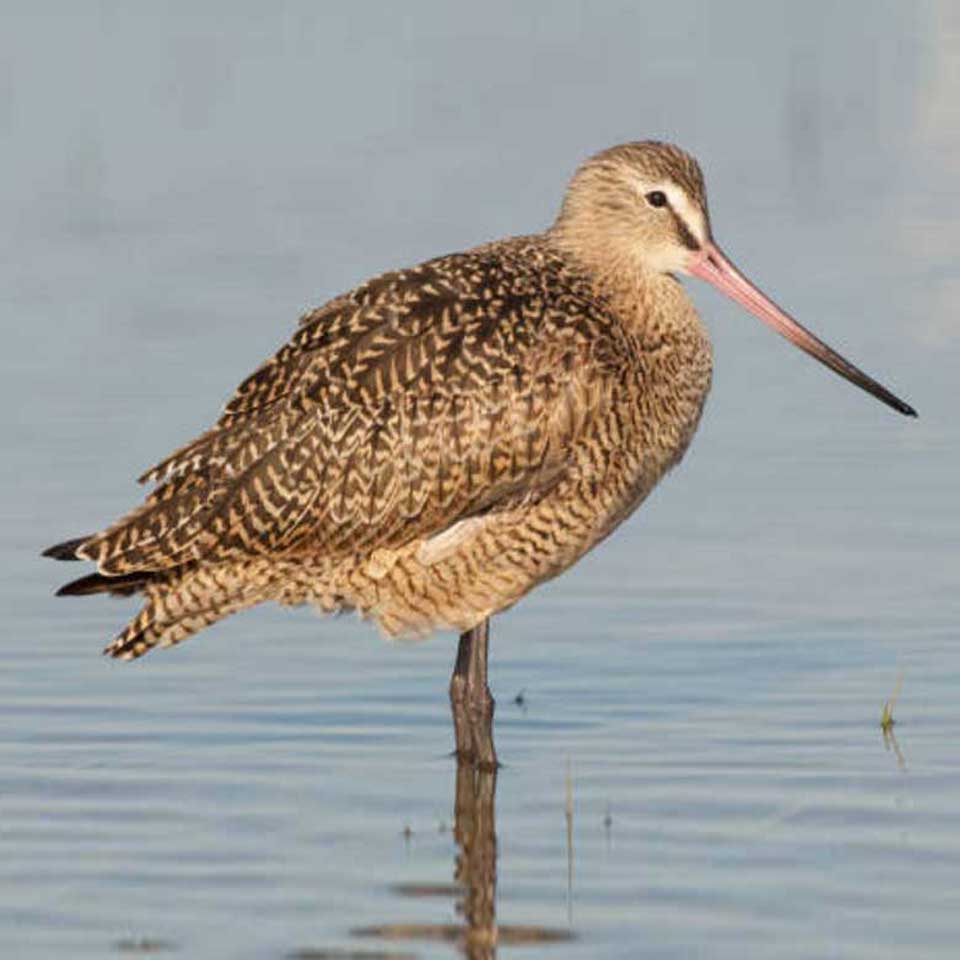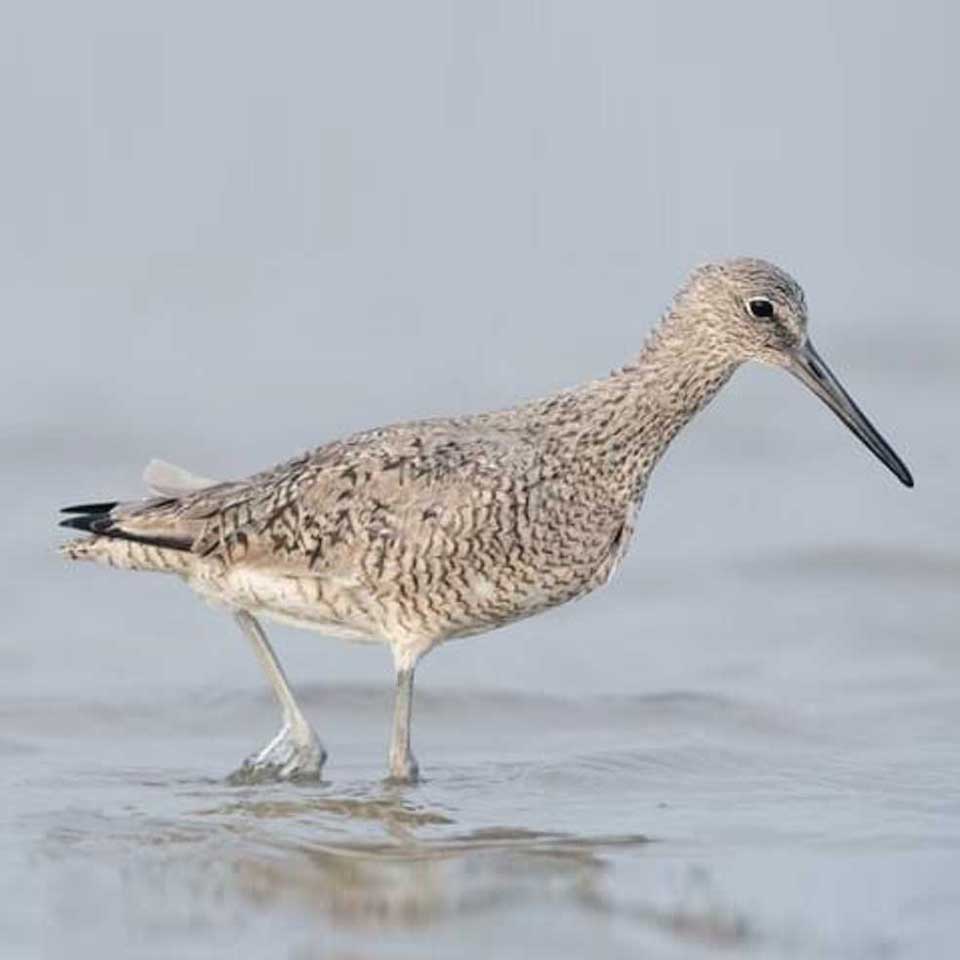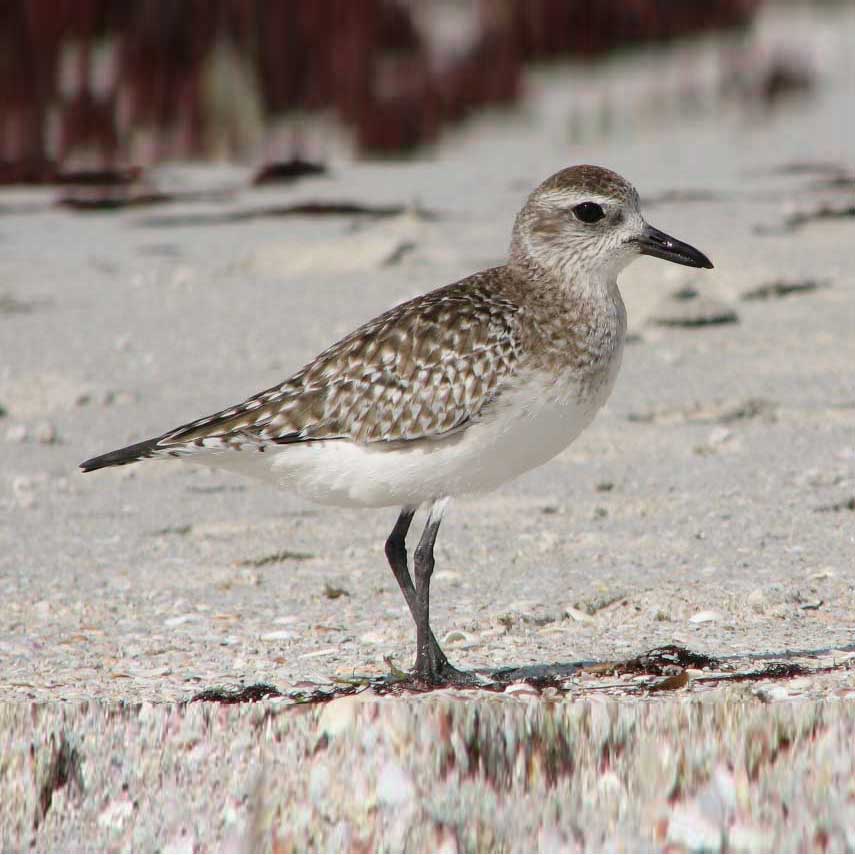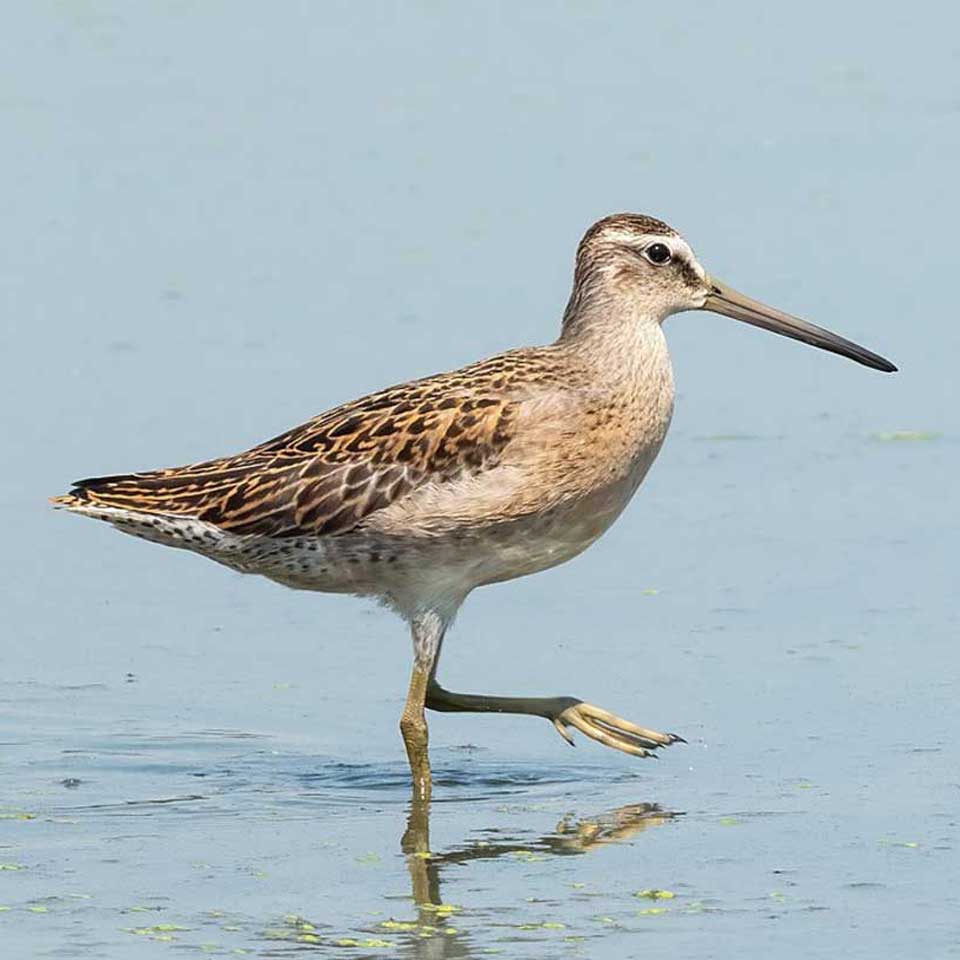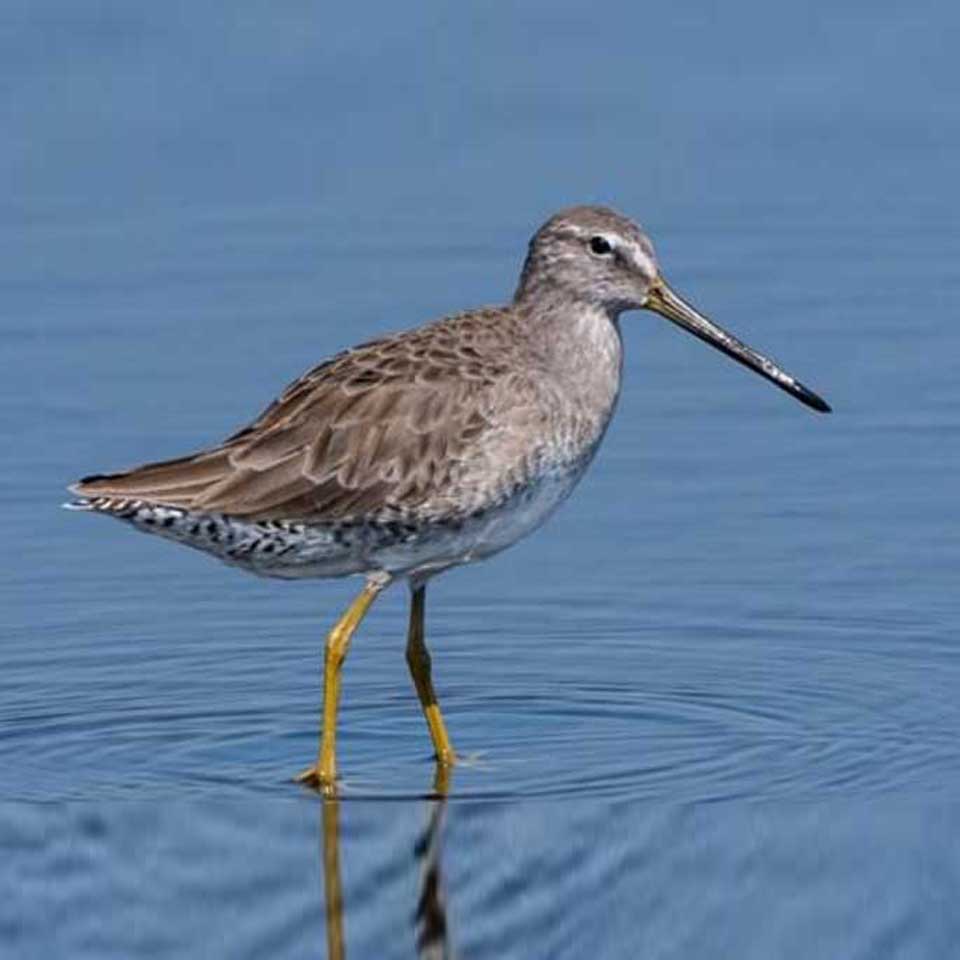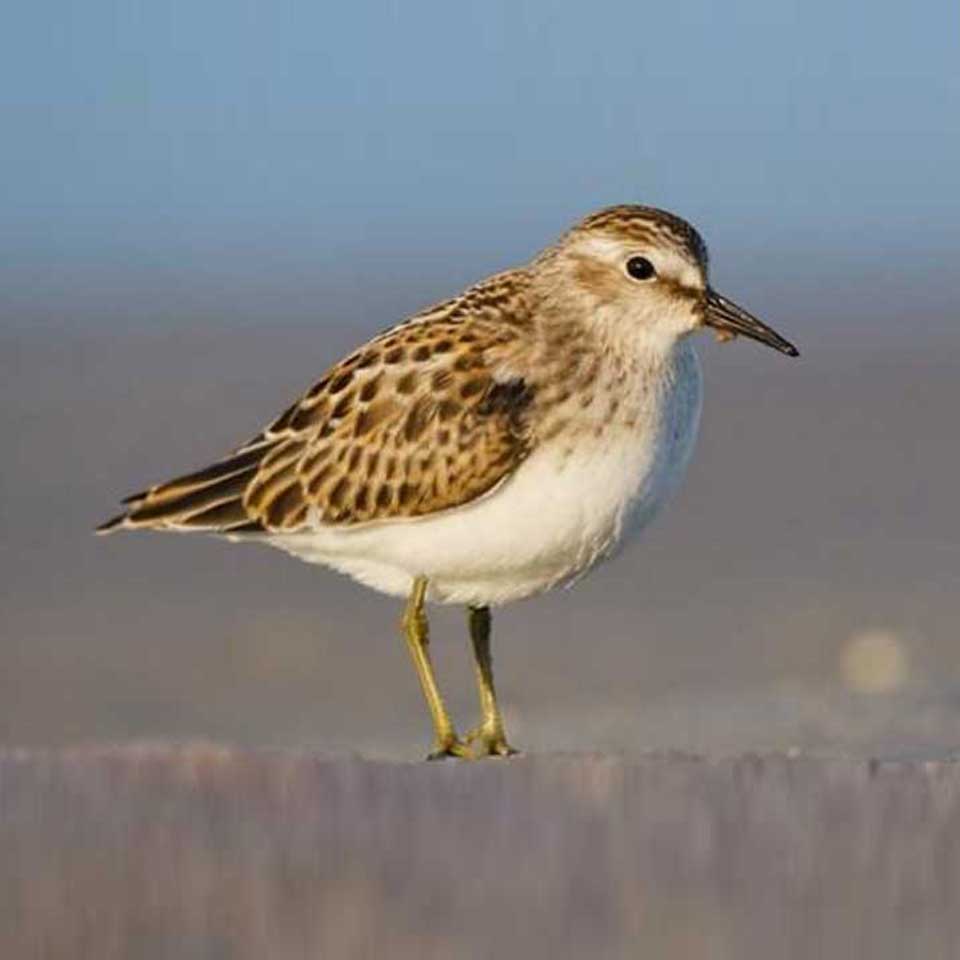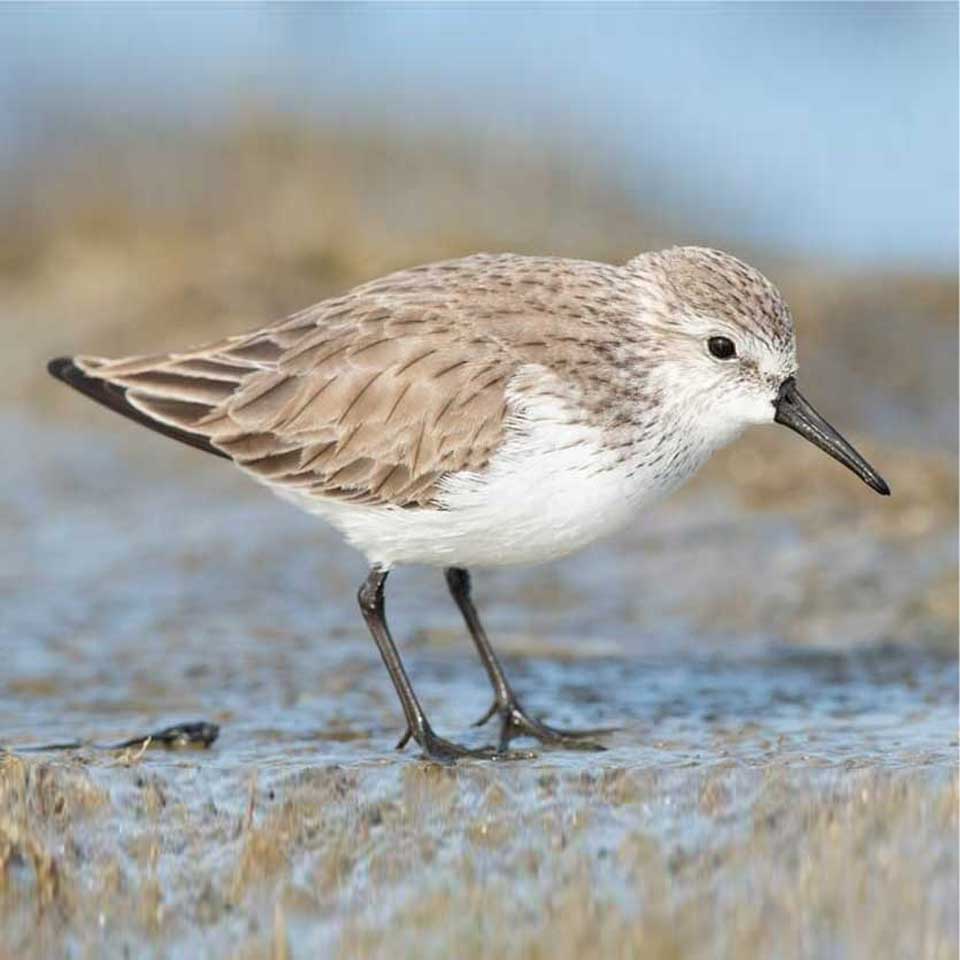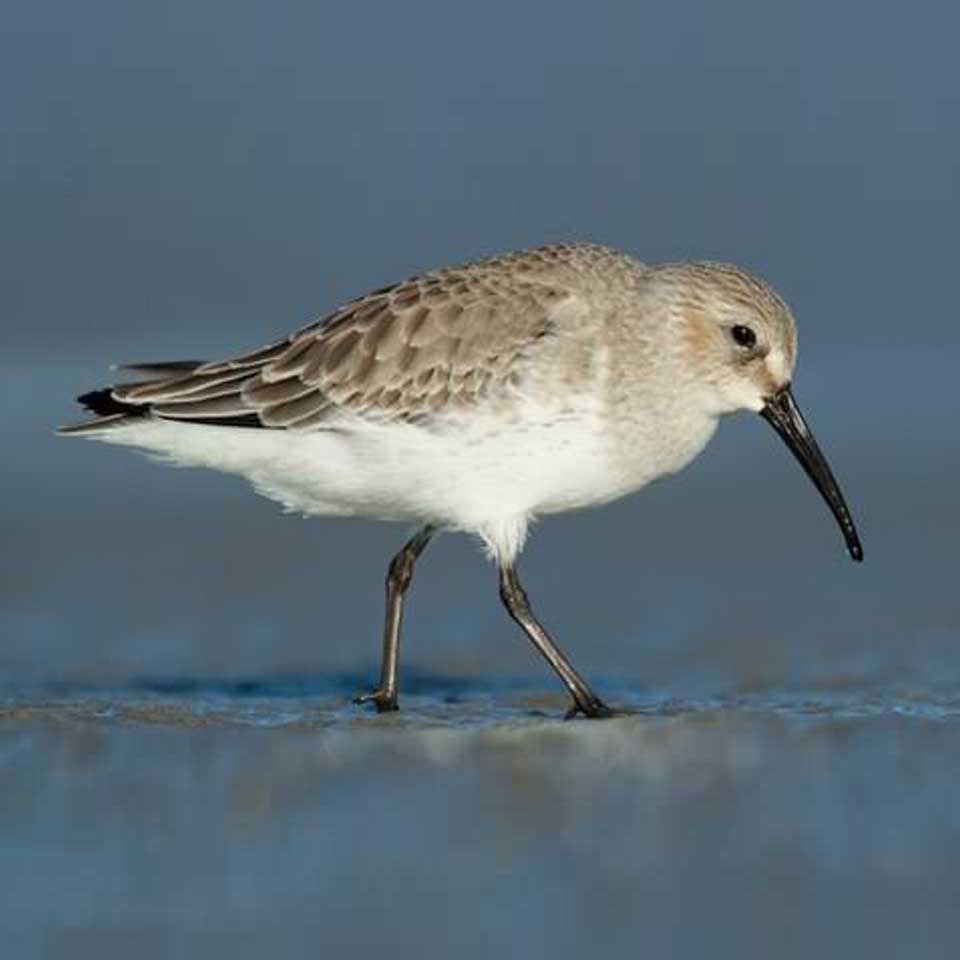Subtidal
This submerged habitat remains underwater even during the lowest tidal cycles. Shellfish beds including oyster reefs and submerged aquatic vegetation including eelgrass beds are critical nurseries for invertebrates and fish and provide important foraging for diving ducks and other waterbirds. These habitats also protect and buffer local shorelines in the face of sea level rise and other climate stressors.
Subtidal habitat in the Bay is struggling to provide quality habitat for the diving duck species indicator.
Subtidal Indicator Species
Greater Scaup
Lesser Scaup
Ruddy Duck
Black Scoter
Surf Scoter
White-winged Scoter
Canvasback
Bufflehead
Barrow’s Goldeneye
Common Goldeneye
Large shorebirds: generally temperate breeding species: American Avocet (Recurvirostra americana), Willet (Tringa semipalmata), and Marbled godwit (Limosa fedoa). [maybe say something more about the biology of each group] They forage in deeper water with their longer bills that can probe for inverts in places med and small shorebirds can’t.
Medium-bodied shorebirds: mid- to high-latitude breeding species: Black-bellied Plover (Pluvialis squatorola) and Short- and Long-billed dowitchers (Lindronomous griseus, L. scolopaceus). Dowitchers probe into the mud in shallow water with rapid sewing machine-like movements. BBPL are short-billed hunters of inverts living on the surface using their large eyes to scan for insects on the muddy surface.
Small-bodied shorebirds: high-latitude breeding species: Dunlin, (Calidris alpina), Western Sandpiper (C. mauri), and Least Sandpiper (C. minutilla). Least Sandpiper use of early restoration sites, tidal channels, and other partially vegetated muddy areas. Has all the recent tidal restoration helped them?
Multi-species indicator results
Key Message: Shorebird numbers in the SF Bay have declined since 2006, reflecting similar declines in nearby habitats such as Bolinas Lagoon and Tomales Bay, as well as across the Pacific Flyway. In recent years, the declines appear to be stabilizing or even increasing slightly for some shorebird groups in some subregions.
[This table will likely be turned into a graphic – either a simple bar plot with all bars extending below zero, grouped by subregion and not by species group as shown here). Better idea: show arrows pointing down with the length of the arrow indicating the extent of change overlaid on a map with the arrows in each subregion (three arrows in each subregion representing the three species groups.]
| Species Group | Region | Percent Change |
|---|---|---|
| Large | North | -61 |
| Central | -72 | |
| South | -42 | |
| Medium | North | -68 |
| Central | -87 | |
| South | -67 | |
| Small | North | -26 |
| Central | -41 | |
| South | -49 |
Key Messages for the above results:
- North Bay shorebirds overall declined by 26 to 68% [ we may use an average for each subregion. Ie, A 52% decline across spp groups in the North Bay)
- Central Bay shorebirds declined the most, by 41 to 81% where there is the least amount of tidal flat habitat.
- South Bay shorebirds declined by 42 to 67%
Large-bodied Shorebirds
American Avocet
Godwit
Willet
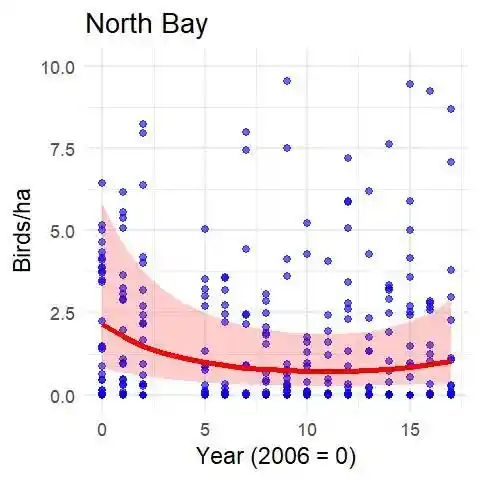
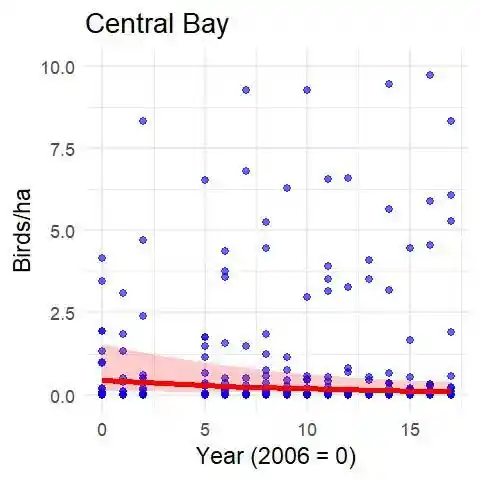
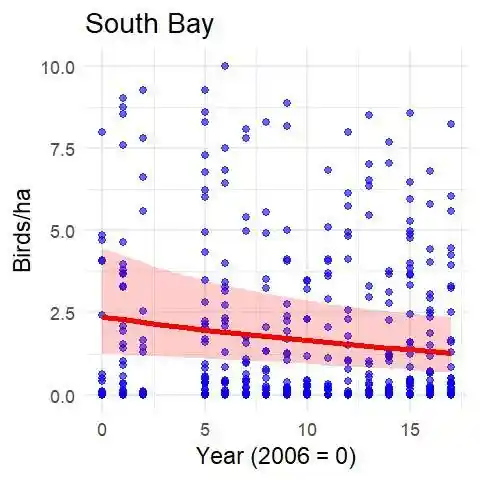
Large-bodied shorebirds in San Francisco Bay 2006 – 2023
Key message: Large shorebirds decreased the most in the Central and North Bay.
Medium-bodied shorebirds
Black-bellied Plover
Short-billed Dowitcher
Long-billed Dowitcher
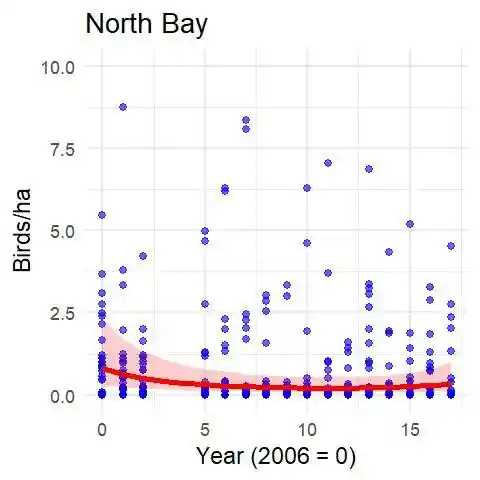
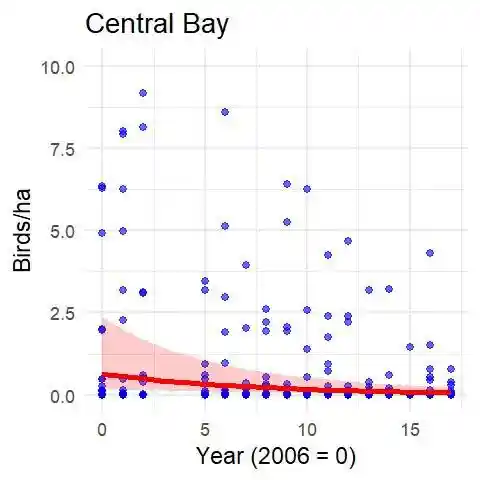
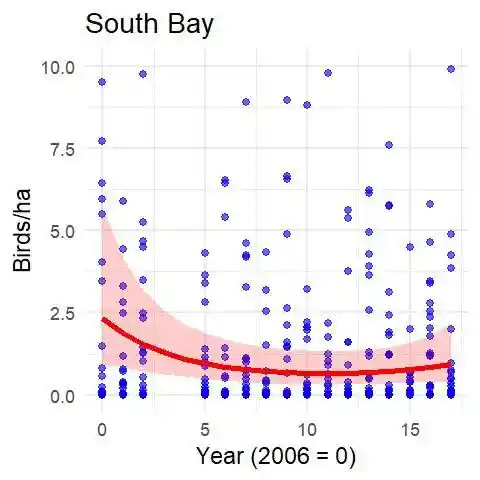
Medium-bodied shorebirds in San Francisco Bay 2006 – 2023
Key message: Medium shorebirds decreased the most overall (-74% if we can average across subregions) with the biggest decline in the Central Bay.
-
- [What can we say about med shorebirds? Why did they decline more than the other two groups?.]
Small-bodied shorebirds
Least Sandpiper
Western Sandpiper
Dunlin
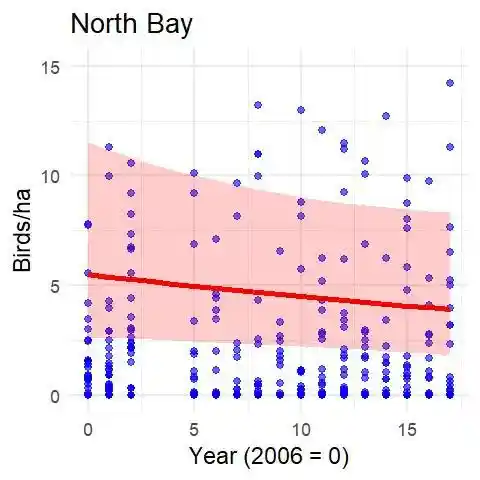
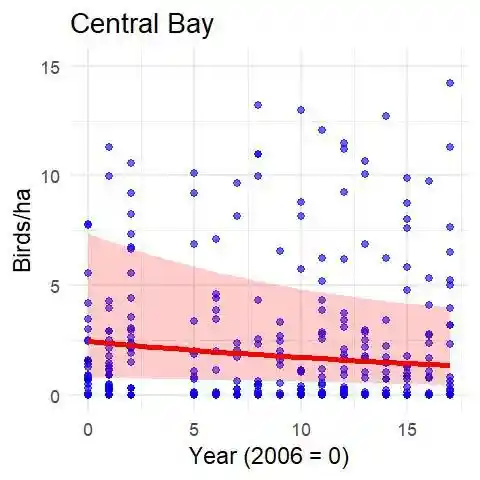
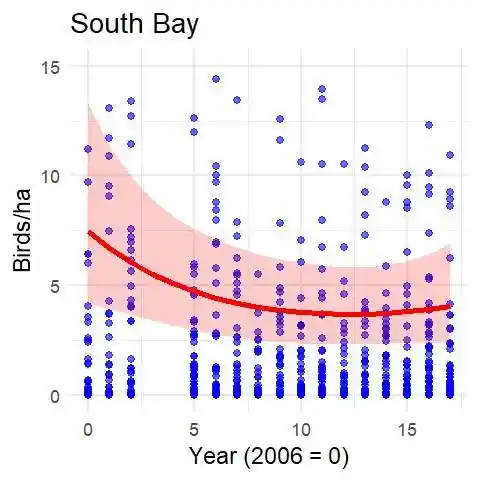
Small-bodied shorebirds in San Francisco Bay 2006 – 2023
Key message: Small shorebirds decreased the least with the largest declines in the Central and South.
-
- [Talk about flyway declines of WESA and DUNL? ]
-
[Possible reason for declines. we don’t have this heading in other habitats. Should we?]
-
[Mudflat area has declined in San Francisco as well as across North America. Conversion of managed ponds to tidal marsh. Invasive species such as Spartina alterniflora and its hybrids has had negative impacts on the ecological function and benthic food web of tidal flats.]
About the Data (Link to About page w/ more info on data and methods)
- High level summary about the tidal flats Dataset
- Methods: High tide bird surveys were conducted annually (Nov 15–Dec 15) across 103 intertidal units in San Francisco Bay, using a standardized area search method. Originally part of the Pacific Flyway Project, these units were surveyed within 1.5 hours of high tide. From 2011 onward, a stratified random sampling approach was used. All units were surveyed on the same day to minimize distributional shifts, with birds identified to species when possible; small shorebird flocks were sometimes counted collectively due to identification challenges.
